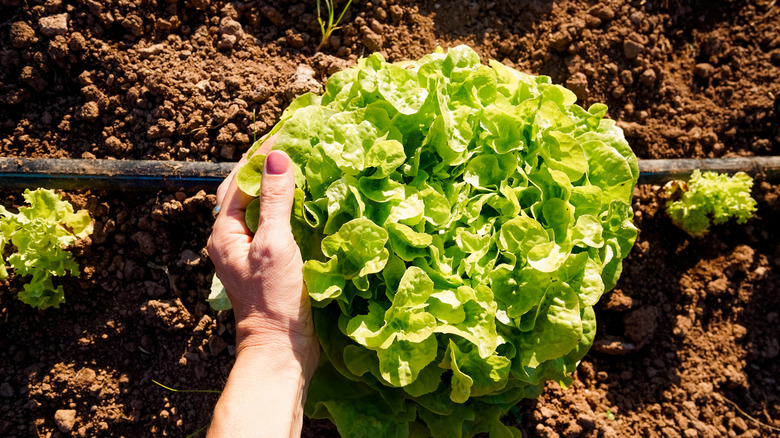Automate Your Plant Watering By Installing An Individual Drip Irrigation System
We may receive a commission on purchases made from links.
Arguably the biggest mistake to avoid when watering your garden is forgetting to do so. Life gets busy for many of us, so taking time to point a garden hose at your beds until the dirt is adequately saturated isn't always an option. Individual drip irrigation systems offer an answer to gardeners looking to implement time-saving solutions. Installing these systems is as easy as connecting the hose to an outdoor faucet, attaching emitters (where the water comes out) to said hose, then burying them next to each plant. Turn on the hose, and water slowly seeps out into the surrounding soil. Many systems come with faucet timers, and some even come IoT enabled, meaning you can turn the irrigation on and off and monitor its output from your smartphone.
Individual drip irrigation works by applying water to the soil slowly — half a gallon to two gallons each hour — and targeting the roots of the plants closest to the emitters. It boasts an application efficiency of 90%, making it a good choice for gardens in drought-prone areas. Drip irrigation is so efficient that some city and county municipal authorities even offer rebates on installation. It also reduces moisture-loving pests and offers an easy way to apply (water soluble) fertilizers. In simple terms, this highly flexible watering technique can save you money and promote healthy plant growth in both in-ground and container gardens. Probably the only downside to individual drip irrigation is that you need to check the emitters frequently for blockages; if your plants look thirsty, there could be a build-up of algae or sediment in the system.
Buy and install your new drip irrigation system
Before you start, read the manufacturer's installation instructions and check the contents of the box to make sure you have all the parts. Then, plan your layout, factoring in the distance between the garden bed you want to irrigate and your faucet, the number of plants that need an emitter, and the length of tubing you'll need to reach every vegetable seedling or shrub. How many emitters you need per plant depends on the species. Woody perennial fruit trees, for example, have higher yields when serviced by more emitters.
Connect the tubing to your faucet and run it to your first plant. Cut it, snap on the emitter, and insert it into the ground. Snake the tubing and emitters through your beds until you've covered all your plants. Turn on your faucet to test your system, and then set the irrigation controller or connect your smartphone, if you have that option.
CARPATHEN Drip Irrigation System for Gardens and Raised Beds for under $50 is perfect for gardeners needing a straightforward setup. It boasts 30 drip emitters in two styles. The decently rated Riboud Drip Irrigation System Kit comes with a whopping 240 feet of hose and costs about the same price as the CARPATHEN, making it arguably the best irrigation systems for substantial flower beds and large gardens. Note that for both of these systems, you'll need to buy a timer separately. Or you could invest just about $30 in the Skycow Solar and USB Power Drip Irrigation System and keep 10 to 15 potted plants hydrated without boosting your utility bill.
